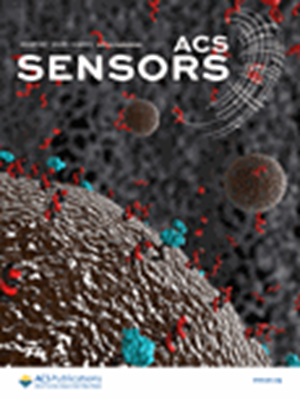Highly Stable Polymeric Electrooculography Electrodes for Contactless Human-Machine Interactions
IF 8.2
1区 化学
Q1 CHEMISTRY, ANALYTICAL
引用次数: 0
Abstract
Capturing the electrooculography (EOG) signals is very attractive for assistive devices and user interfaces for virtual reality (VR) systems. However, the current EOG acquisition systems face challenges in ensuring user comfort, particularly in terms of electrode electrical and mechanical performance, long-term usability, thermal effects, and overall system portability. This study presents polymeric dry flexible electrodes, composed of a composite of poly(3,4-ethylenedioxythiophene):polystyrenesulfonate (PEDOT:PSS), poly(vinyl alcohol) (PVA), Gallic acid (GA), and D-sorbitol, forming a dynamic cross-linked network that ensures strong adhesion, stretchability, and electrical stability. These electrodes maintain their performance for up to 72 h, and can be restored through heat reactivation if performance degrades after prolonged storage. This electrode exhibits excellent biocompatibility, causing no skin irritation or thermal effects with continuous use. We have also developed a flexible circuit for real-time signal processing and wireless transmission, which operates in coordination with the EOG electrodes. The system employs a convolutional neural network (CNN) to achieve a 97.1% accuracy in classifying various eye movement patterns. The system enables contactless control of digital interfaces through simple eye movements, offering a solution for long-term, comfortable, and high-fidelity EOG-based human-machine interfaces, particularly for VR integration and assistive technologies for individuals with disabilities.

用于非接触人机交互的高稳定聚合物眼电成像电极
捕捉眼电图(EOG)信号对于虚拟现实(VR)系统的辅助设备和用户界面非常有吸引力。然而,目前的EOG采集系统在确保用户舒适性方面面临挑战,特别是在电极电气和机械性能、长期可用性、热效应和整体系统可移植性方面。本研究提出了聚合物干燥柔性电极,由聚(3,4-乙烯二氧噻吩)、聚苯乙烯磺酸盐(PEDOT:PSS)、聚乙烯醇(PVA)、没食子酸(GA)和d -山梨醇组成的复合材料组成,形成一个动态交联网络,确保了强粘附性、可拉伸性和电稳定性。这些电极保持其性能长达72小时,如果长时间储存后性能下降,可以通过热激活恢复。该电极具有良好的生物相容性,连续使用不会引起皮肤刺激或热效应。我们还开发了一种用于实时信号处理和无线传输的柔性电路,该电路与EOG电极协同工作。该系统采用卷积神经网络(CNN)对各种眼动模式进行分类,准确率达到97.1%。该系统可以通过简单的眼球运动实现数字界面的非接触式控制,为长期、舒适和高保真的基于eeg的人机界面提供解决方案,特别是为残疾人提供VR集成和辅助技术。
本文章由计算机程序翻译,如有差异,请以英文原文为准。
求助全文
约1分钟内获得全文
求助全文
来源期刊

ACS Sensors
Chemical Engineering-Bioengineering
CiteScore
14.50
自引率
3.40%
发文量
372
期刊介绍:
ACS Sensors is a peer-reviewed research journal that focuses on the dissemination of new and original knowledge in the field of sensor science, particularly those that selectively sense chemical or biological species or processes. The journal covers a broad range of topics, including but not limited to biosensors, chemical sensors, gas sensors, intracellular sensors, single molecule sensors, cell chips, and microfluidic devices. It aims to publish articles that address conceptual advances in sensing technology applicable to various types of analytes or application papers that report on the use of existing sensing concepts in new ways or for new analytes.
 求助内容:
求助内容: 应助结果提醒方式:
应助结果提醒方式:


